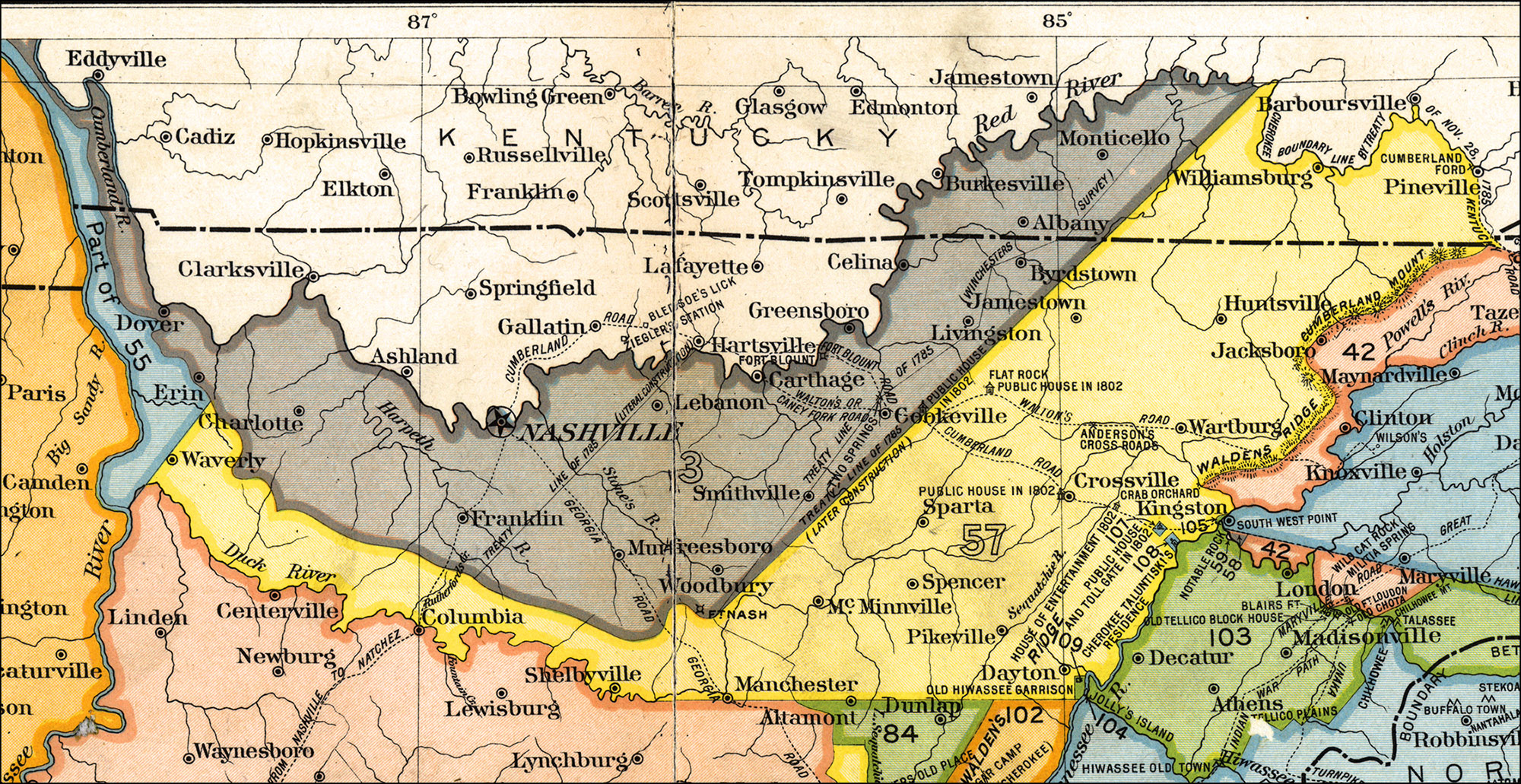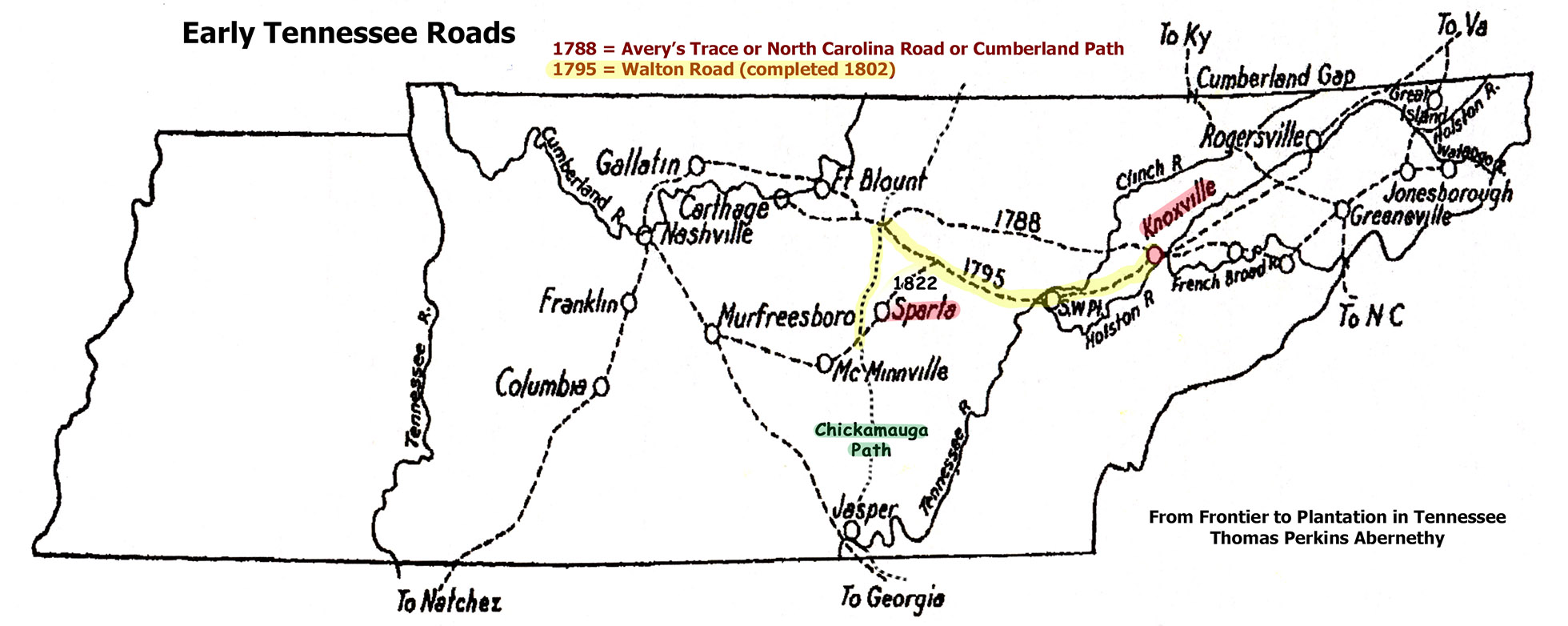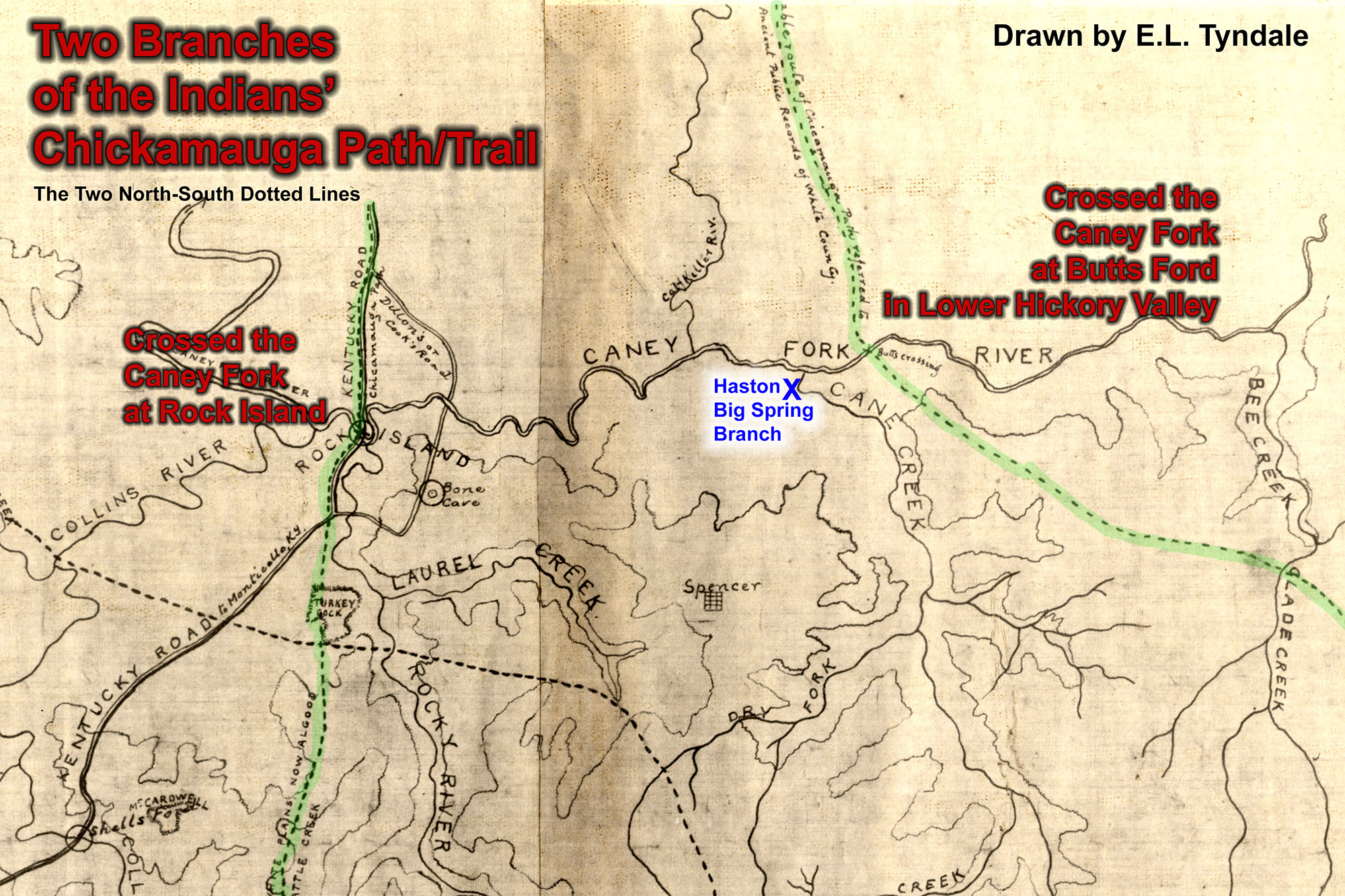30 - Our Hastons Moved West of the Cumberland Mountain

Through the Tellico Treaties of October 25 and 27, 1805, Cherokee chiefs ceded to the United States a large area of Middle Tennessee. On April 24, 1806, the October 1805 treaties were officially proclaimed by the President of the United States. Much of Middle Tennessee, including then-future White County, was legally opened for white pioneers. White County historian Monroe Seals noted: “After the Treaty of Tellico the country settled up rapidly.”[i]
[i] Monroe Seals, History of White County. (1935; reprinted, Salem, MA: Higginson Book Company, n.d.), 6.
The 1805 cession of land from the Cherokees is indicated by the yellow (57) section of the above map. The Cherokee surrendered their claims “from the Kentucky line on the north to [the future towns of] Manchester and Altamont on the south, from the Tennessee River on the east to the neighborhood of Livingston, Cookeville, Smithville, and Woodbury on the west.”[i] The ceded territory included the future locations of Sparta, Spencer, McMinnville, and Crossville.
[i] Hamer, 243-244.
Assuming Daniel was born in about 1750, the first 33 years (or so) of his life were spent in Virginia and the next 21 years (or so) were spent in Western North Carolina/East Tennessee. He lived out the remainder of his life (22 years or so) near the confluence of Cane Creek and the Caney Fork River in what became White County, Tennessee, nearly 40 years before it became a part of northern Van Buren County.
Exactly when Daniel moved to White County is not known. My best guess is that he left Knox County sometime between the spring of 1803 and mid-1804. I have theorized that Daniel may have made a land-hunting trip across the Cumberland Plateau sometime between October 1798 and January 1800. That is also a guess, but there is enough evidence to give it some degree of credibility.

In September 1788, the steep and rugged Avery Trace (also called the North Carolina Road) was opened, it began at the Clinch River and entered the Cumberland Mountain from the east through Emory Gap (near the present town of Harriman, Tennessee). The Trace was originally nothing more than a horse path, but was widened to accommodate wagons in 1795. It crossed the Cumberland Plateau and began to descend the western slope at Standing Stone (now Monterey), then continued on to Nashville by way of Fort Blount, Dixon Springs and Winchester’s Station (now site of Gallatin).
But a better, wider, and more direct road—a wagon road from the beginning—to Nashville was opened fourteen years later, September 1802.* This newer road, which took a slightly more southernly route, was constructed under the leadership of William Walton, and became known as the Walton Road or Cumberland Road/Turnpike. It was about 15 feet wide on flat land and 12 feet wide through the mountains. On the east, it started at Southwest Point, south of Kingston, climbed up Kimbrough’s Gap, crossed the plateau through Crab Orchard, ran about four miles north of the future site of Crossville (originally Lambeth’s Crossroads), and on to Standing Stone.[i] On the west side of the Cumberland Plateau, Walton Road passed through the sites that became Cookeville, Baxter, Carthage, Gallatin, before ending in Nashville.[ii] It ran westward about 20 miles north of where Sparta was located four years later.
*This Walton Road was completed in 1801 or 1802, but was authorized in 1794 and construction began on it in 1795, beginning in Carthage, Tennessee (where William Walton lived) and working eastward.
[i] W. Calvin Dickinson, Cumberland County. (Cookeville, TN: Tennessee Technological University, 1992), 6.
[ii] John Dawson Boniol, Jr., “The Walton Road,” Tennessee Historical Quarterly, XXX, no. 4 (Winter, 1971): 403-407.
If Daniel scouted for land in Middle Tennessee in 1799 or 1800, he would probably have crossed the Cumberland Mountain on the Avery Trace. But when he moved to his new homesite on the Caney Fork River in 1803 or 1804, he and his family and their friends would have undoubtedly travelled the Walton Road.
The branch off of the Walton Road that turned south to Sparta was not constructed until about 1822. So Daniel’s clan probably followed the Indian Chickamauga Path, from the Walton Road as it passed through White Plains (near now what is Algood in Putnam County) down into White County to the Caney Fork River. Somewhere along the way, the Chickamauga Path branched in two directions.

The Western Branch of the Chickamauga Path/Trail ran south through Beersheba Springs, Coalmont, Tracy City, west of Jasper to the “Lower Towns” of Chickamauga Indians. The Eastern Branch ran southeast through Hickory Valley and Big Bottom, up the Cumberland Mountain, crossed Bee Creek, and on to Pikeville and probably to the Cherokee “Upper Towns,” as well as the Chattanooga-Chickamauga area.
The Eastern Branch of the Chickamauga Path crossed the Caney Fork River at Butts Ford, only about 1.7 miles upriver from the mouth of Cane Creek near the Haston’s Big Spring where Daniel and other “Big Springs” families settled.
How did Daniel Haston locate the land he and others claimed on or near the Big Spring Branch? We can only guess. But possibly he followed one branch of the Chickamauga Path to the Caney Fork River, then searched up or down the river until he discovered Cane Creek and the Big Spring Branch. Or, possibly he had met Thomas Dillon in Knoxville who directed him to the Cane Creek of the Caney Fork River site. Dillon had acquired a patent (based on Certificate #313) for 5,000 acres that included many 100s of acres in the general area where Daniel Haston settled.

